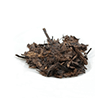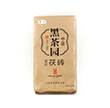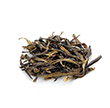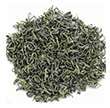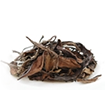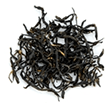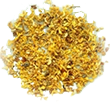About Chinese Teapots
Making tea is essentially the process of breaking down the cell walls of tea leaves to release their flavour. The Gong-Fu Cha (Tea With Great Skill) method of traditional tea-making is about doing this in a very controlled way to get the maximum flavour consistently for the maximum number of brews. Too much or too little heat will break down the leaves too quickly or too slowly for the tea you are making and the flavour will be inconsistent. An incorrectly sized teapot will constrict the expansion of the leaves or leave them drowning in too much water.
The key is in matching the right size and shape of teapot, the type of clay and firing temperature with the right type of tea and the number of people being served. And since a teapot is something that may be used every day, a teapot should be something that should be comfortable to handle, long lasting and pleasing to the eye.
Serious Gong-Fu Cha enthusiasts spend many hours debating the virtues of their teapots, but there is universal agreement on these four points:
- Any tea is best made in unglazed clay teapots and the best teapots are made from “Purple Clay” (Zisha) from the Yixing (Yee-zhing) area of China
- Zisha clay has excellent porosity and heat handling properties that significantly improves the taste of tea when compared to tea made in a glass, porcelain or glazed teapots.
- Only one Yixing teapot should be used for each type of tea.
- High-fired teapots with a finer, thinner clay are excellent for use with most types of tea and a must for Green, White and Oolong teas. Low-fired teapots that use a thicker and more porous clay work best for Black Tea (called Red Tea in China) and Pu-Erh Tea.
Certain clays, fired at certain temperatures are used for certain types of teapots. Teapots made from more porous clay are low-fired and are made thicker to hold heat longer which is good for Black Teas (called Red Teas in China) and Pu-Erh Teas (called Black Teas in China). High-fired teapots for teas such as Green, White and Oolongs use a finer, thinner clay and will cool faster, preventing these more delicate teas from “cooking” in the teapot.
Chart - Selecting A Chinese Teapot By Profile And Method Of Firing
| HIGH PROFILE | High Fired Clay | Low Fired Clay |
 |
Most Green/White Teas any tea made from "tips" Taiwan Oolong |
Pu-erh |
| LOW PROFILE | ||
 |
Tie Guan Yin (also called Chinese Oolong, Iron Buddha, Buddha of Mercy Da Hong Pao Phoenix Tea |
Lapsang Souchong and other Chinese Black Teas (known as Red teas in China) |
Chinese clay teapots do not use glazing. Clay is porous and tea oils are intended to build up inside the teapot and over time, actually smooths the taste of tea and improves it by adding its own unique character with accumulated oils. Never make different teas in the same teapot unless they are from the same family or class of teas, such as different types of green or oolongs, but even this is not ideal as some teas from the same family have a strong flavour and in time, their taste would transfer to a more delicately flavoured tea.
Your teapot will be your friend for many years so make sure there are no cracks or chips. It should have good balance, be comfortable in the hand, the handle and lid should fit your fingers, the lid fit precisely in the top opening and the opening on the top just large enough to accommodate the size of leaves you will be using. A smaller opening tends to keep the fragrance of tea in the teapot whereas a larger opening allows the fragrance to escape. So tea with small or rolled leaves and high fragrance (Green, White, Oolongs) will benefit from a smaller opening. A larger opening is better for tea with large leaves and low fragrance (Black and Pu-Erh).
The spout should be large enough to allow the tea to pour freely. Gong Fu Cha develops the taste of tea quickly with fast brew times so the hole of the spout needs to be as large as possible to not constrict the flow of tea being poured, which would make the brew times longer. Check other sized teapots to ensure the spout is proportional to the size of teapot. Many newer teapots come with a strainer built-in. If your teapot does not have a strainer, ask to have one inserted inside the spout.
Glass & Porcelain Teapots
Glass and porcelain teapots are “flavour neutral “ and unlike clay teapots, do not change the taste of tea in any way as their impermeable surfaces do not absorb any tea oils and they can be rinsed clean after each use. These are good for testing and comparing teas. You might want try a new tea in a glass or porcelain teapot before you make it in your clay teapot to compare how your clay teapot is affecting the taste.
If you want to save money or are a traditionalist, you can use the traditional Gai Wan which is an inexpensive porcelain pot with a lid and base that comes in many sizes and can be used for all teas. Glass teapots are often used for Green/White and “blooming” teas as they do not absorb the delicate tea fragrance like clay and you can see the leaves expanding in a pretty display. But a high quality, high-fired Zisha clay teapot is still superior and like all clay teapots, improves the taste.
For more deatiled information, see our How-To Guide: "How To Choose A Chinese Teapot by Daniel Lui"
 Top of Page
Top of Page

Ask The Tea Wizard
Don't know which tea is right for you? Answer a few questions and the Online Wizard will show you all the Chinese teas that suit your taste.


